Compared with Monnig’s and Stripling’s, the R. E. Cox stores were latecomers to Fort Worth retail, but they also were among the last to disappear, hanging on—as downtown flagship stores propagated satellite stores in the suburbs, as other families sold stores they had owned for generations, as mergers created stores with ampersanded names—into the early twenty-first century.
 Roscoe Edmund Cox was born on a farm at Cox’s Bend, a small community on the Brazos River in Somervell County, in 1876. He was one of eight children. When R. E. was fourteen his father died.
Roscoe Edmund Cox was born on a farm at Cox’s Bend, a small community on the Brazos River in Somervell County, in 1876. He was one of eight children. When R. E. was fourteen his father died.
According to the Star-Telegram, R. E. Cox attended Thorp Spring College outside Granbury and John Tarleton State College in Stephenville.
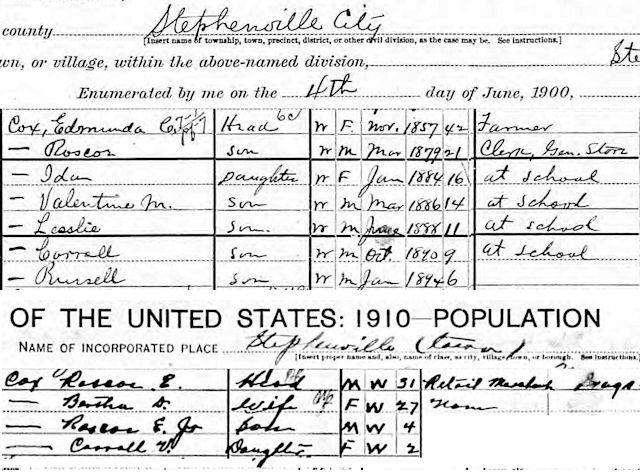 In 1898 he went to work as a clerk in a general store in Stephenville. In 1907 he opened his own drugstore there.
In 1898 he went to work as a clerk in a general store in Stephenville. In 1907 he opened his own drugstore there.
 Seven years later, in 1914, brothers R. E., R. A., and V. M. Cox converted R. E.’s drugstore into a dry goods store.
Seven years later, in 1914, brothers R. E., R. A., and V. M. Cox converted R. E.’s drugstore into a dry goods store.
Two years later R. E. and R. A. incorporated the business.
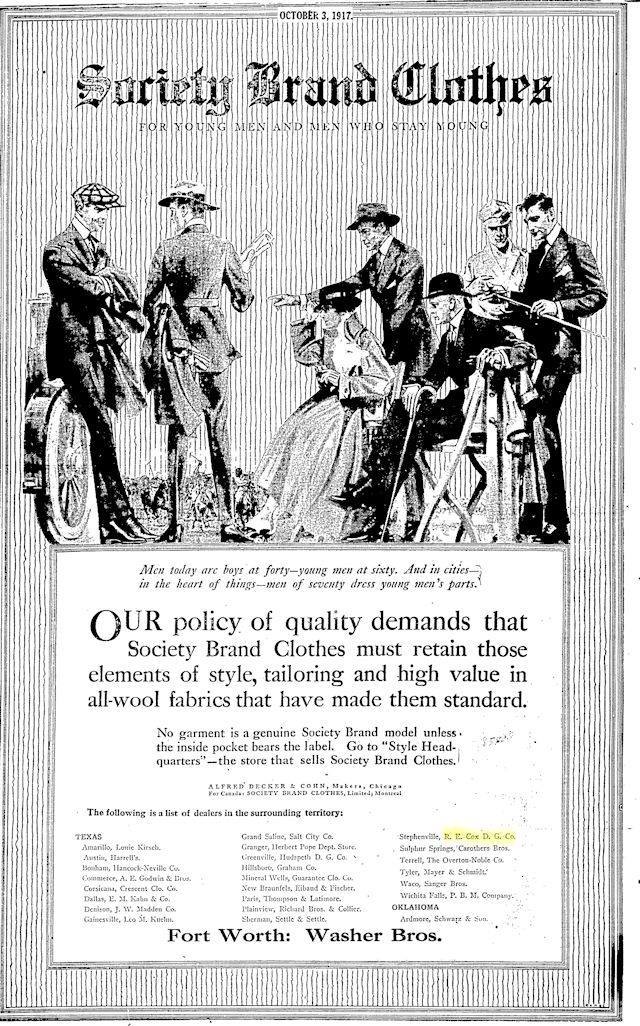 Stephenville was a small town in an agricultural county, but the Cox store sold some big-city brands. This ad for Society Brand Clothes lists Washer Brothers, Sanger Brothers, and E. M. Kahn of Dallas. Society Brand eventually would be bought by Hart Schaffner & Marx, which also would eventually buy—and merge—the Washer Brothers and Jas. K. Wilson clothing stores.
Stephenville was a small town in an agricultural county, but the Cox store sold some big-city brands. This ad for Society Brand Clothes lists Washer Brothers, Sanger Brothers, and E. M. Kahn of Dallas. Society Brand eventually would be bought by Hart Schaffner & Marx, which also would eventually buy—and merge—the Washer Brothers and Jas. K. Wilson clothing stores.
Business was good. The Cox brothers opened a store in Waco in 1922 and in Marlin in 1925. The Marlin store was managed by R. E. Cox Jr.
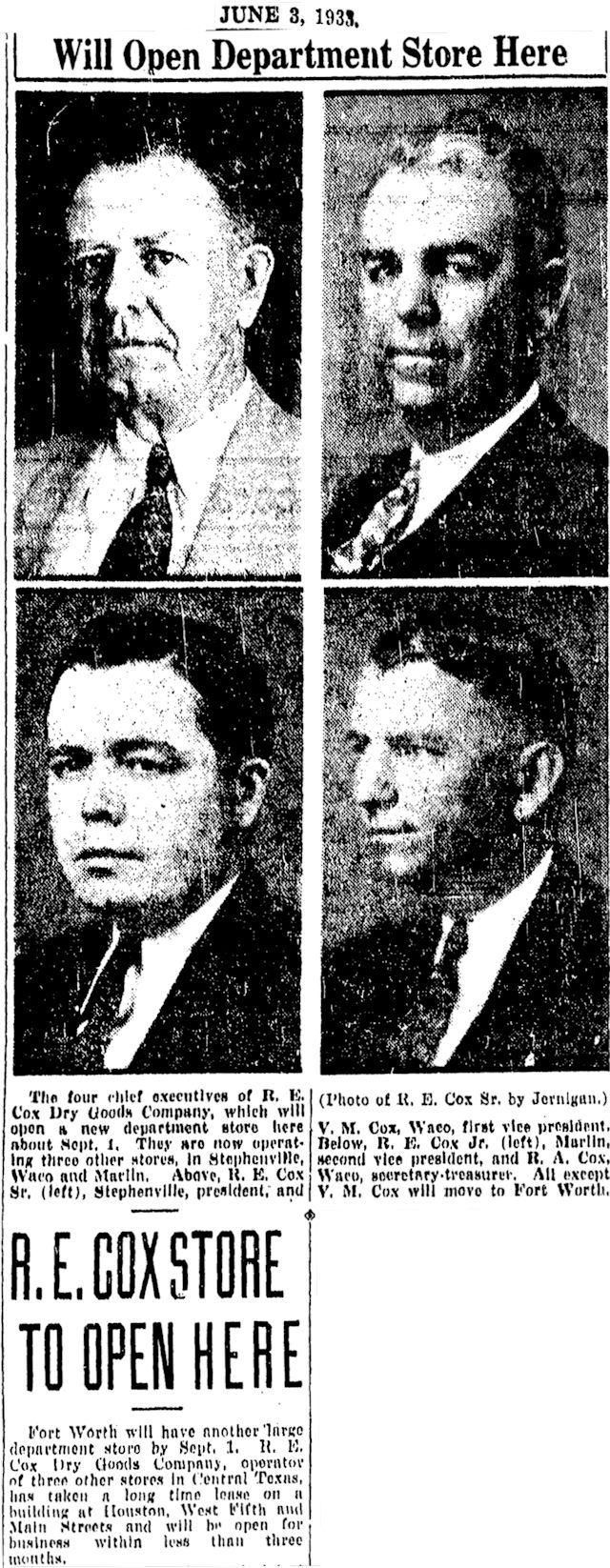 In 1933 R. E. Cox made his big move: He brought R. E. Cox Dry Goods Company from Stephenville (population 4,000) to Fort Worth (population 163,000).
In 1933 R. E. Cox made his big move: He brought R. E. Cox Dry Goods Company from Stephenville (population 4,000) to Fort Worth (population 163,000).
And he brought some moxie with him. He was entering a crowded field in downtown Fort Worth: Already established were Stripling’s, Washer Brothers, Ellison’s, Monnig’s, The Fair, Meacham’s, and Leonard’s. (Sanger’s had closed in 1930.)
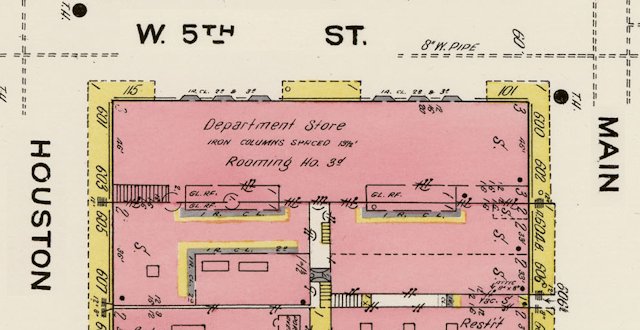 The first home of the R. E. Cox stores in Fort Worth was the Scott-Harrold Building. The building was narrow but stretched from Main to Houston streets along West 5th Street.
The first home of the R. E. Cox stores in Fort Worth was the Scott-Harrold Building. The building was narrow but stretched from Main to Houston streets along West 5th Street.
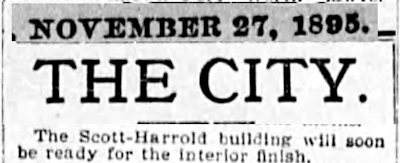 The building was built in 1895 by Winfield Scott and fellow capitalist E. B. Harrold. The building had been the home of The Fair department store from 1895 to 1930.
The building was built in 1895 by Winfield Scott and fellow capitalist E. B. Harrold. The building had been the home of The Fair department store from 1895 to 1930.
By 1933 Winfield Scott was dead, and his widow, Elizabeth, owned the building. She remodeled it for Cox. The Star-Telegram said the new store would employ fifty to sixty-five people.
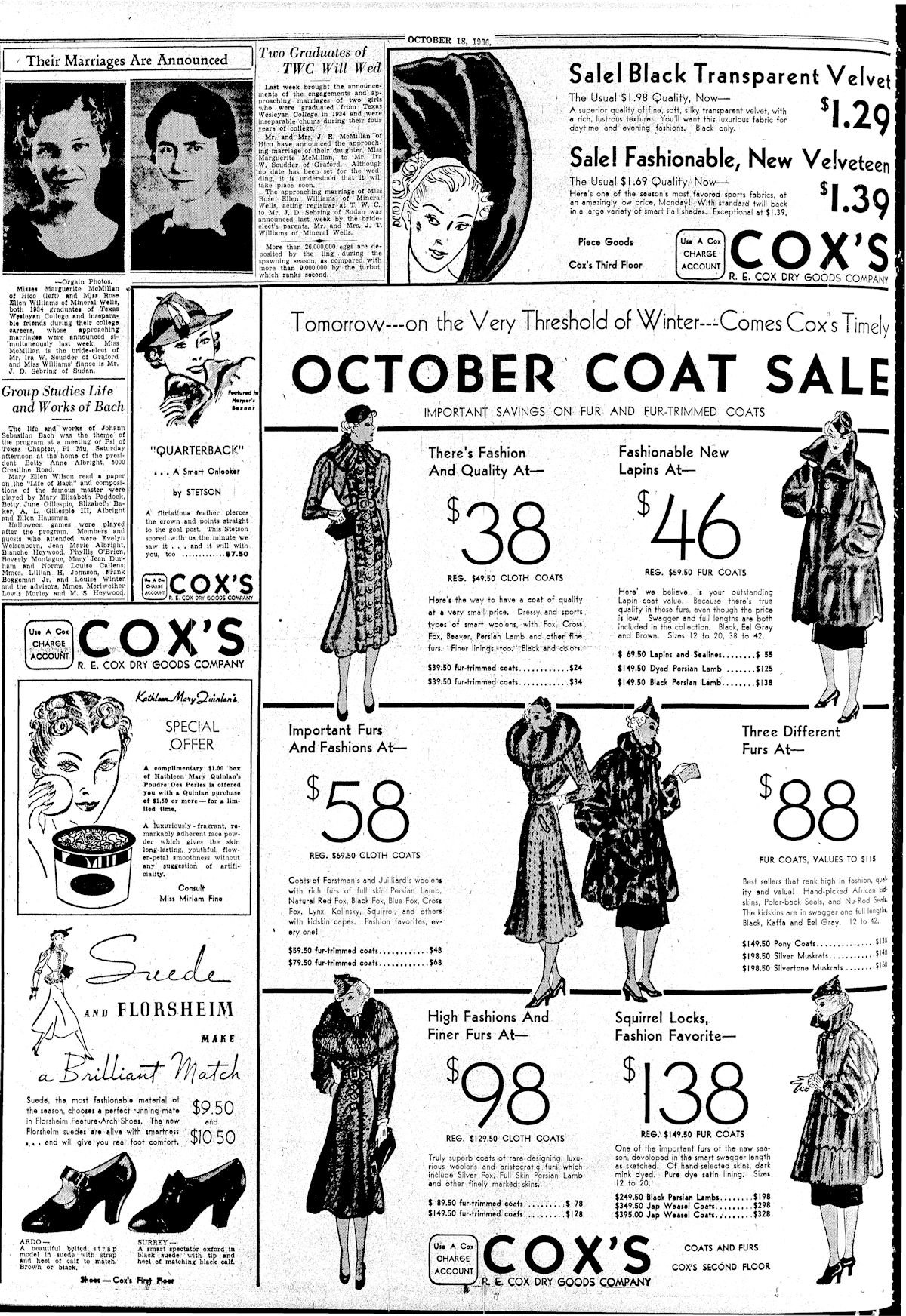 In 1936 the company still called itself a “dry goods company.”
In 1936 the company still called itself a “dry goods company.”
 R. E. Cox’s moxie served him well. His Fort Worth store prospered. In 1936 he moved his own home to 2317 Medford Court East in the fashionable Park Hill addition. The house had been built in 1929 for attorney Marvin Simpson.
R. E. Cox’s moxie served him well. His Fort Worth store prospered. In 1936 he moved his own home to 2317 Medford Court East in the fashionable Park Hill addition. The house had been built in 1929 for attorney Marvin Simpson.
 Ad is from 1939.
Ad is from 1939.
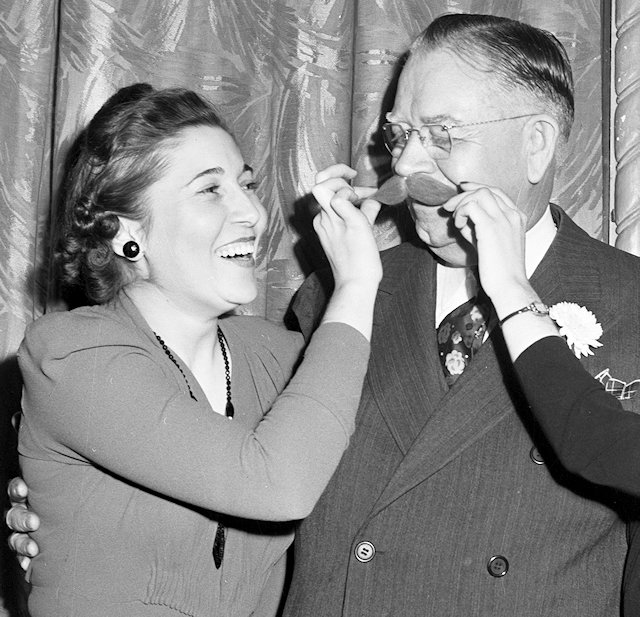 R. E. Cox posed with Ruth Burton Carter, daughter of Amon Carter, in 1941. (Photo from University of Texas at Arlington Library.)
R. E. Cox posed with Ruth Burton Carter, daughter of Amon Carter, in 1941. (Photo from University of Texas at Arlington Library.)
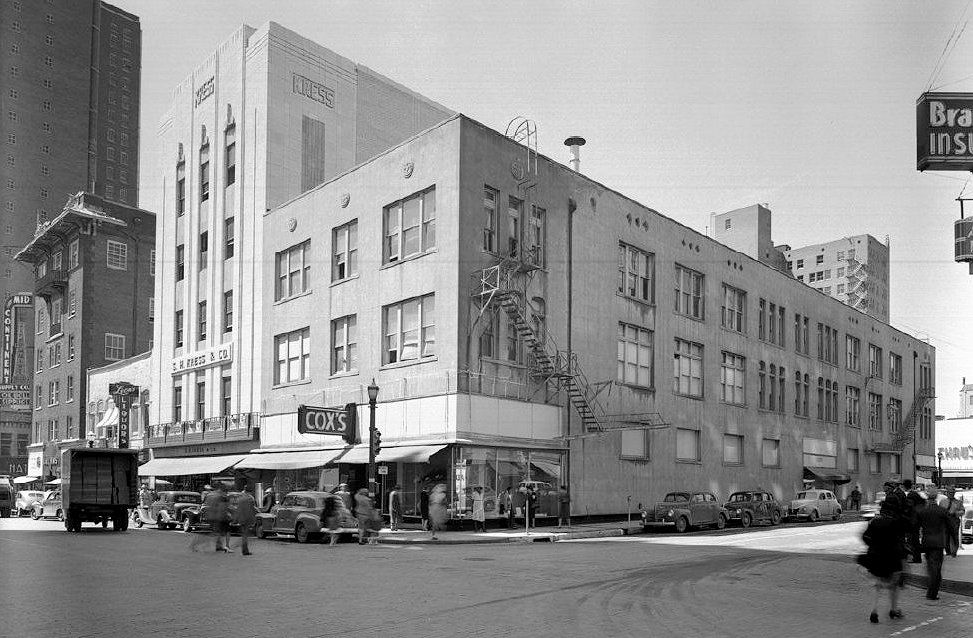 By 1946 the Cox store had outgrown its space in the Scott-Harrold Building.
By 1946 the Cox store had outgrown its space in the Scott-Harrold Building.
Believe it or not, this is how the 1895 Scott-Harrold Building looked in 1946. The building’s exterior had been given a radical modernization designed by architect Wiley Clarkson. Gone was the ornate brick-and-stone architecture of the 1890s. The building was torn down in 1996—a long lifetime for a building in downtown Fort Worth.
This 1946 W. D. Smith photo is a time capsule of the 600 block of Main Street. From the left are the 1915 Fort Worth Club Building (now the Ashton Hotel but in 1946 occupied by Mid-Continent Supply Company, owned by Ken Davis, father of Cullen), the 1890 Winfree Building (second location of the White Elephant), Kress, and Cox. (Photo from University of Texas at Arlington Library.)
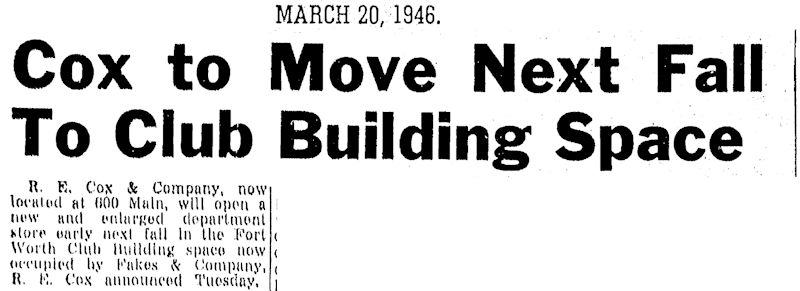 In 1946 R. E. Cox announced that the store would relocate to the bottom six floors of the grand Fort Worth Club Building, designed by Sanguinet, Staats, and Hedrick and built in 1925. Cox was able to move into the Fort Worth Club Building because the original tenant in 1925, Fakes Department Store, had moved to 406 Houston Street.
In 1946 R. E. Cox announced that the store would relocate to the bottom six floors of the grand Fort Worth Club Building, designed by Sanguinet, Staats, and Hedrick and built in 1925. Cox was able to move into the Fort Worth Club Building because the original tenant in 1925, Fakes Department Store, had moved to 406 Houston Street.
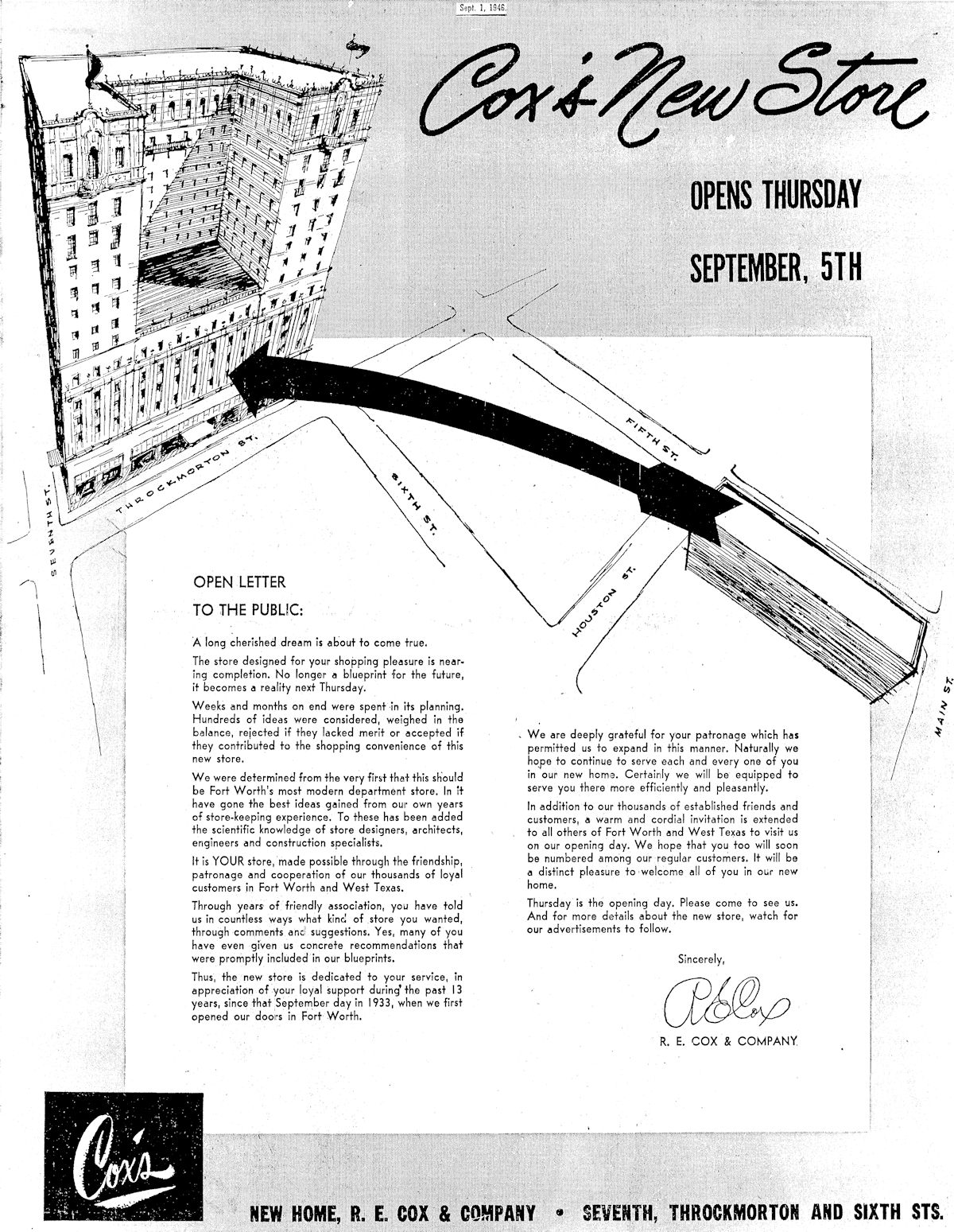 An open letter from R. E. Cox.
An open letter from R. E. Cox.
The relocation by Cox from 600 Main to 300 West 7th put three major retailers—Ellison’s Furniture and Carpet, The Fair, and R. E. Cox—at the corner of West 7th and Throckmorton streets.
When the new Cox store opened on September 5, 1946 an estimated two thousand shoppers entered the store during the first twenty minutes.
 The Cox store added its new home to its logo.
The Cox store added its new home to its logo.
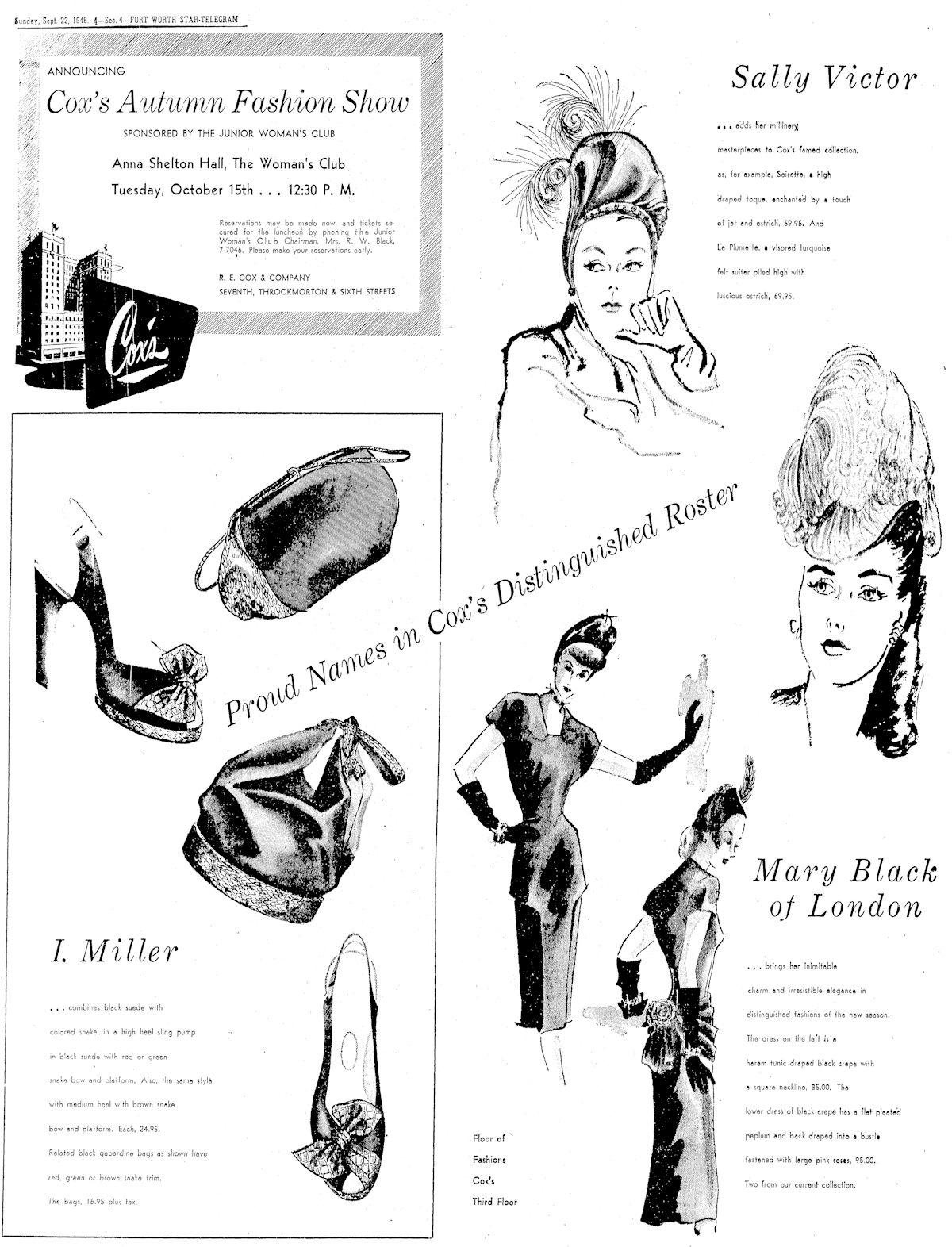 Cox held a fashion show at the Woman’s Club of Fort Worth.
Cox held a fashion show at the Woman’s Club of Fort Worth.
Cox, like the rest of the downtown department stores, was a heavy advertiser in the Star-Telegram.
 In 1951 Cox was one of the first downtown department stores to open a suburban branch: on West Berry Street near TCU.
In 1951 Cox was one of the first downtown department stores to open a suburban branch: on West Berry Street near TCU.
Two years later Cox opened a store on East Lancaster Avenue in Meadowbrook.
 In 1954 the size of the Berry Street store was doubled. By 1954 R. E. Cox Jr. was president of the company; his father was chairman of the board.
In 1954 the size of the Berry Street store was doubled. By 1954 R. E. Cox Jr. was president of the company; his father was chairman of the board.
Two years later a store opened on East Belknap Street at Beach.
 By 1956 Cox had its flagship store downtown and three suburban stores. Note the coupon. For more than forty years the Cox stores, like most department stores, offered customers the option of placing orders by phone or mail to a personal shopper.
By 1956 Cox had its flagship store downtown and three suburban stores. Note the coupon. For more than forty years the Cox stores, like most department stores, offered customers the option of placing orders by phone or mail to a personal shopper.
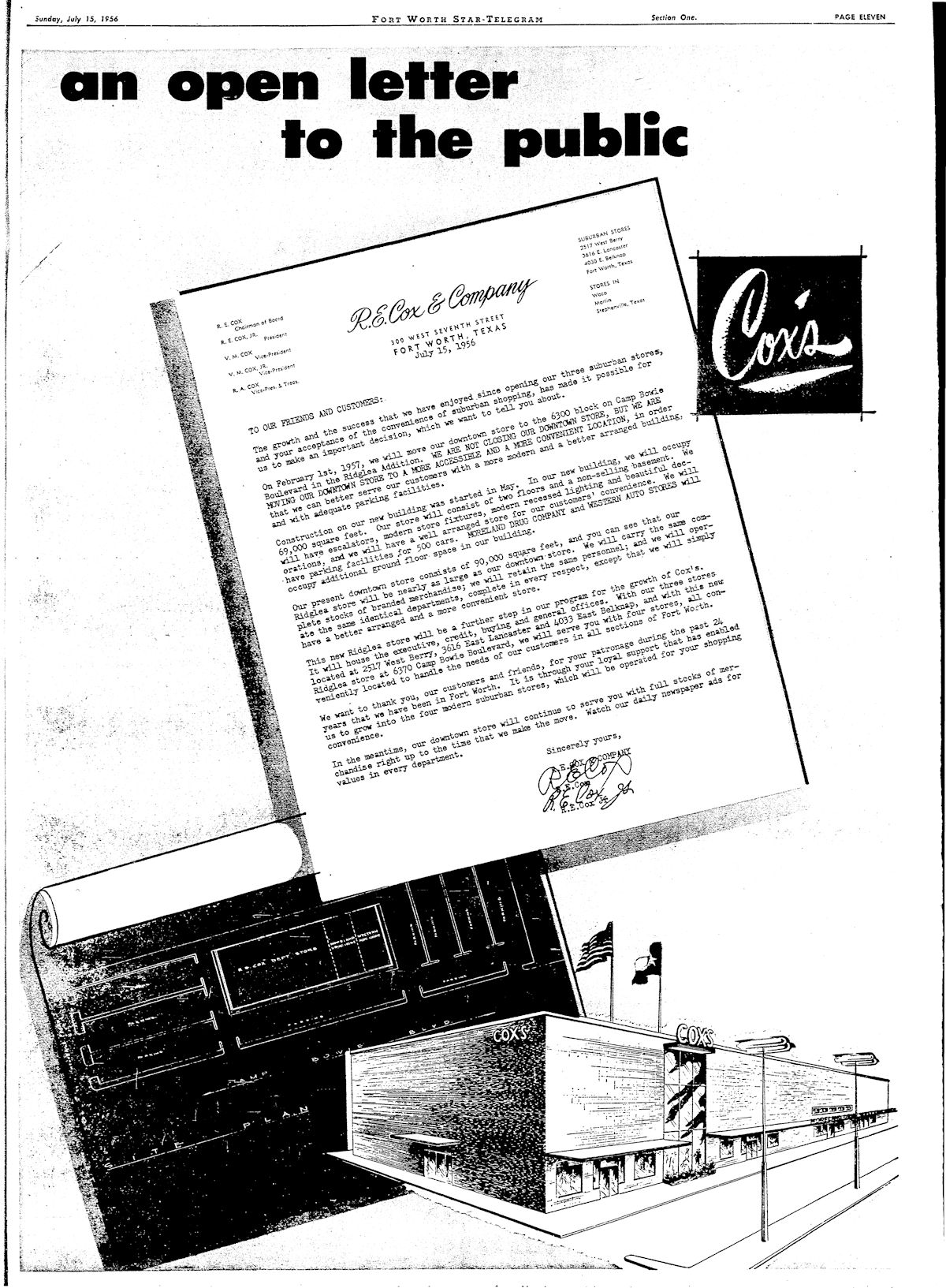 That year R. E. Cox was back with another open letter to Fort Worth: The flagship store was sailing from downtown to the West Side. Cox would build a new home for its main store in Ridglea. The downtown store would remain open until the relocation.
That year R. E. Cox was back with another open letter to Fort Worth: The flagship store was sailing from downtown to the West Side. Cox would build a new home for its main store in Ridglea. The downtown store would remain open until the relocation.
The Ridglea store opened in February 1957, and the downtown store was closed after eleven years.
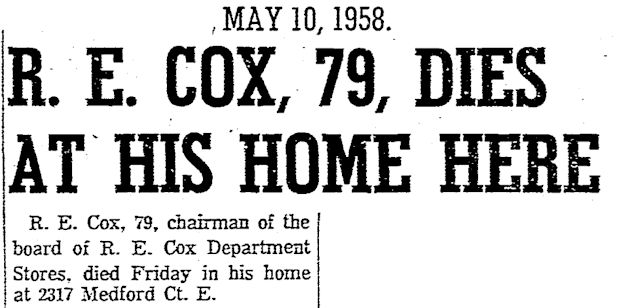 Fifteen months later Roscoe Edmund Cox died at age seventy-nine.
Fifteen months later Roscoe Edmund Cox died at age seventy-nine.
He is buried in Greenwood Cemetery.
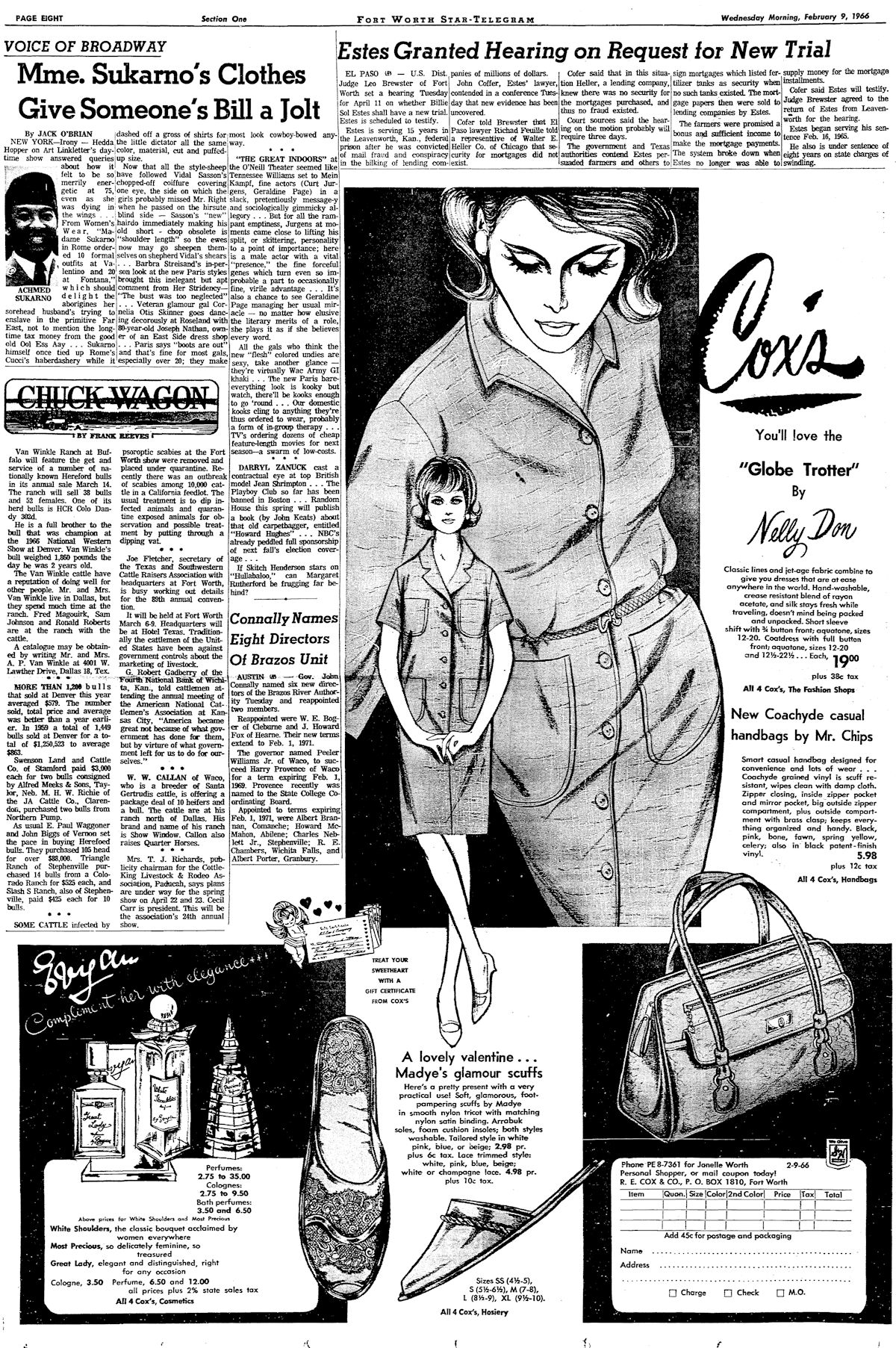 An ad from 1966.
An ad from 1966.
 Ten years later.
Ten years later.
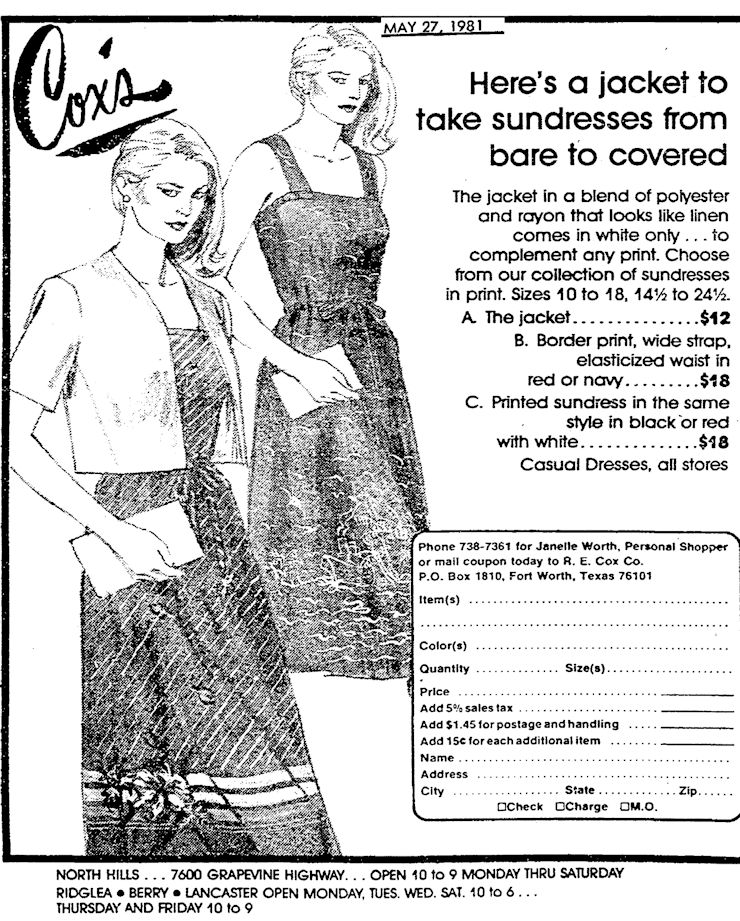 An ad from May 1981.
An ad from May 1981.
By now the third generation—R. E. Cox III—was chairman of the board.
But more change was coming.
 In 1977 the Dunlap Company of Fort Worth had bought Stripling’s.
In 1977 the Dunlap Company of Fort Worth had bought Stripling’s.
And in September 1981 Dunlap bought the R. E. Cox stores, inserted an ampersand, and merged the two brands as “Stripling & Cox.”
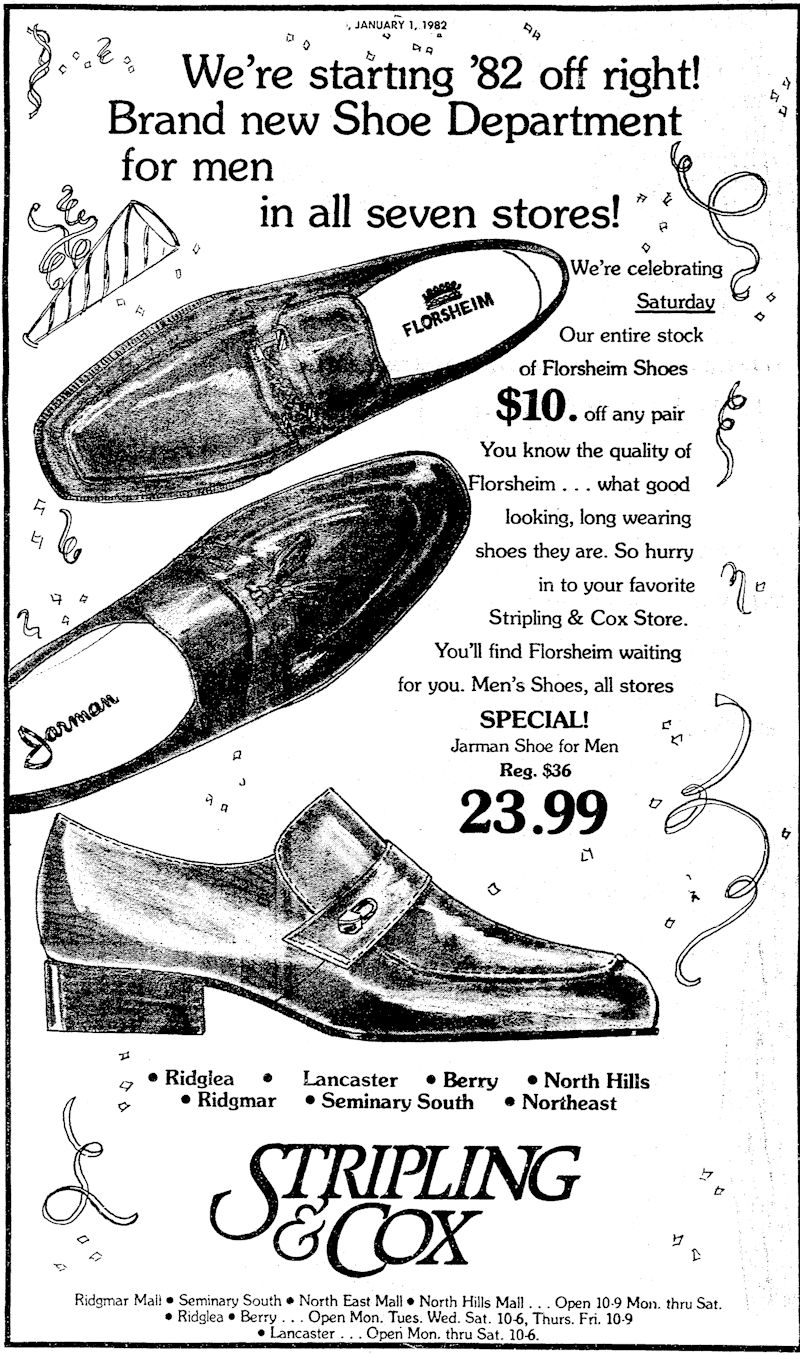 With the merger, Stripling & Cox had seven stores—none of them downtown.
With the merger, Stripling & Cox had seven stores—none of them downtown.
The timeline of the rest of the twentieth century was good:
1987 Stripling & Cox opens a store in Cityview Center in southwest Fort Worth.
1990 Stripling & Cox opens a store in Arlington.
The timeline of the new century was fatal:
2004 The East Lancaster Avenue store closes.
2005 Stripling & Cox now has two stores in Arlington. Both close.
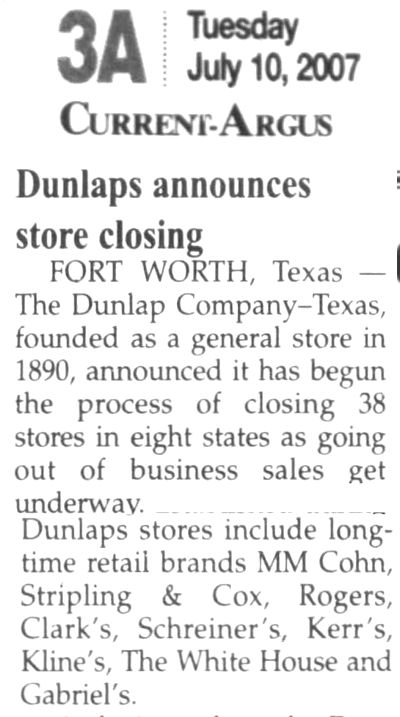 2007 The Dunlap Company closes all thirty-eight of its stores in eight states, including the remaining Stripling & Cox stores.
2007 The Dunlap Company closes all thirty-eight of its stores in eight states, including the remaining Stripling & Cox stores.
2009 The Camp Bowie Boulevard building is demolished.
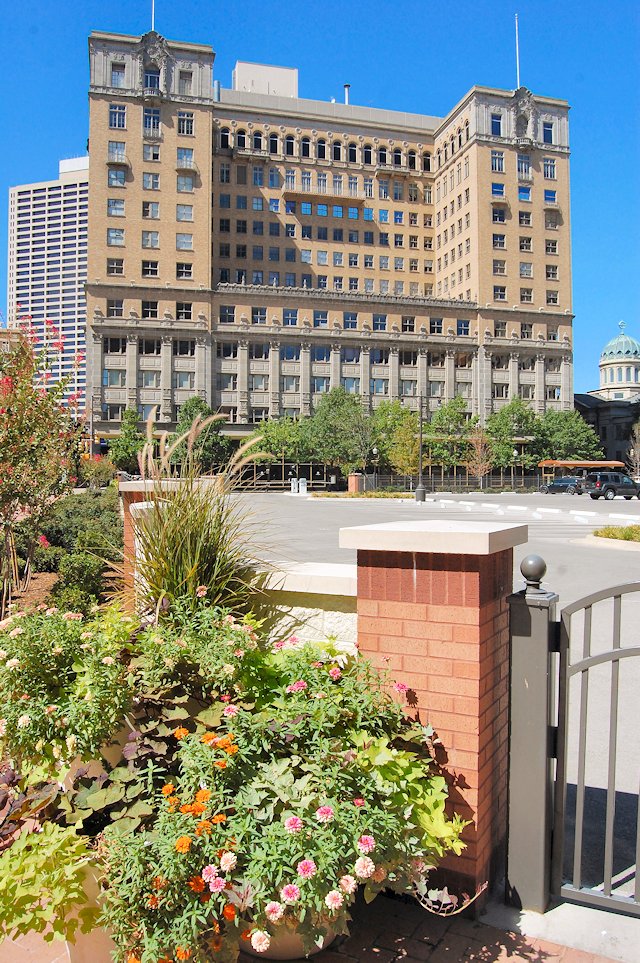 But the grand Fort Worth Club Building still stands.
But the grand Fort Worth Club Building still stands.
 And at least three suburban Cox store buildings survive: East Lancaster Avenue, East Belknap, and West Berry.
And at least three suburban Cox store buildings survive: East Lancaster Avenue, East Belknap, and West Berry.
Today the East Lancaster building houses the Fort Worth police department crime lab and property room facility.
The Fort Worth Cox stores had been family owned for forty-eight years. When they were sold in 1981 they were the last department stores in town still owned by the founding family. (The 1960s had been especially hard on family-owned stores, with Washer Brothers, The Fair, Ellison Furniture and Carpet, Meacham’s, and Leonard’s being sold.)
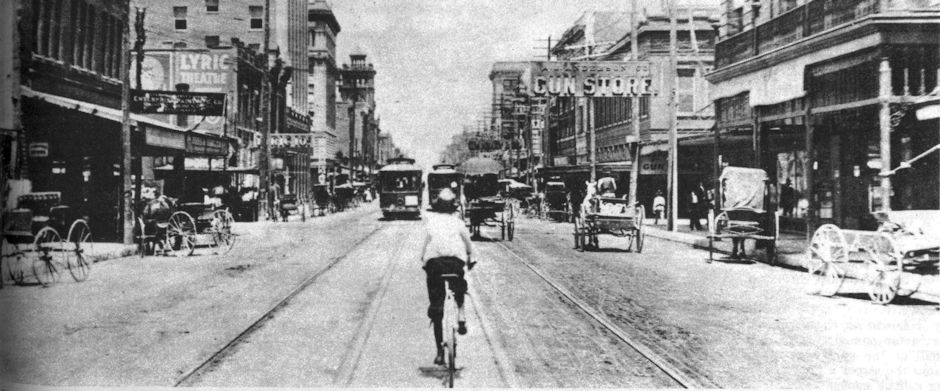





The W. Berry Street store closed in the summer of 1995. I was working in the women’s department on the last day. The older ladies who had worked for the Cox company would tell us younger clerks stories of the old glory days of Cox’s and the fine quality goods that the company had sold.
I pass through Cuero on occasion. One of the old Fair Department Store (I think from Wichita Falls) signs graces a corner building. It brings back fond memories; Meuhlberger’s, Perkins-Timberlake, McClurkan’s, even Sears. I miss the ’60’s & ’70’s.
It would be so wonderful to be back in the days when it was exciting to go to the stores like Cox’s and other local family started named clothiers to look for and see the new things available. People today
I feel sorry for them they missed so much life traded in for existing only. Technology has actually done what Ted Kysinski the unibomber guy predicted i dont agree with his methods or outcome so horrible but what it continues to do to mankind is scary shattering families and destroying an individuals involvement and feelings of uselessness job losses as here whole industry and business closures. Sad just very sad. Not glad im old but glad im not just born recently.
Hard to tell what if any my grandchildren will be facing.
I can promise it wont be Shangri la